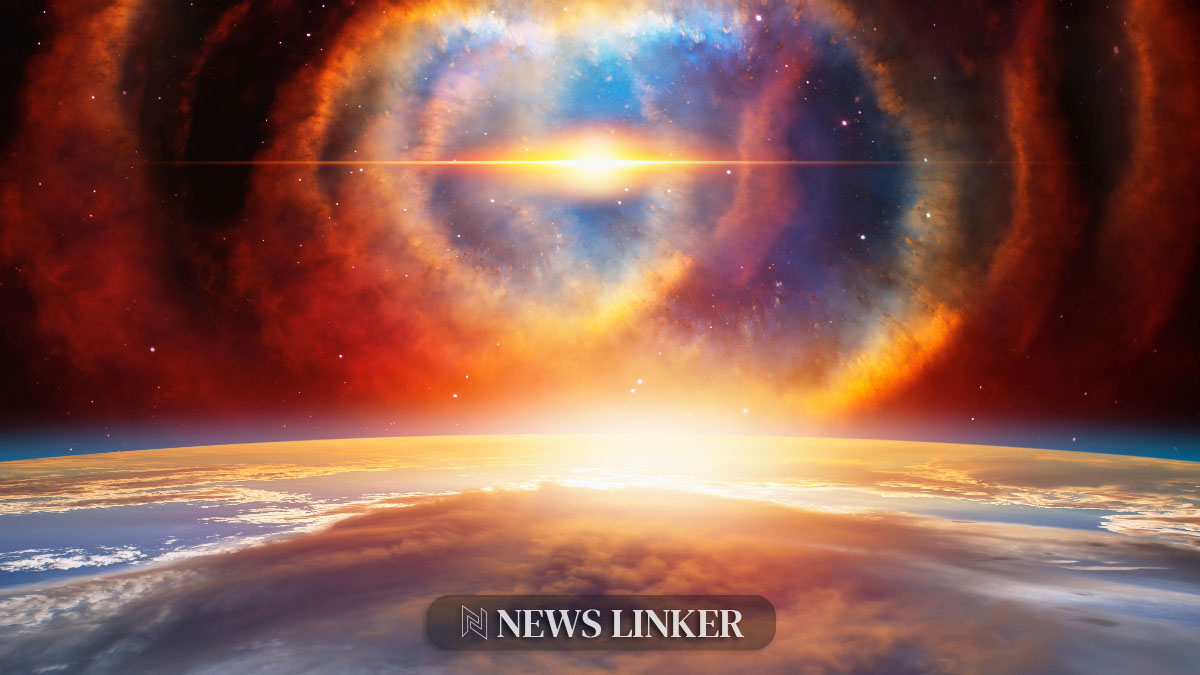In the vast canvas of the cosmos, a small yet remarkable galaxy, identified as LEDA 42160, finds itself amidst a celestial struggle within the Virgo cluster, located some 52 million light-years away. The Hubble Space Telescope, a joint project between NASA and ESA, has captured a striking image of this dwarf galaxy. As a subject of intense study, LEDA 42160 is undergoing a dynamic phase due to the ram pressure from intergalactic gas, which is simultaneously stripping the galaxy of material and potentially triggering new star formations.
The concept of ram pressure acting upon galaxies is not new. Its effects have been observed and analyzed in various cosmic structures over time. In larger galaxies within dense clusters, this pressure has been known to initiate star birth. However, the impact on smaller galaxies like LEDA 42160 remains less clear. Prior observations have suggested that the interplay between gravitational forces and the dense intergalactic medium can lead to complex outcomes, such as the removal of a galaxy’s star-forming potential or, conversely, the stimulation of new stellar nurseries. The Virgo cluster, with its intense environment, presents an ideal setting to observe these processes.
Understanding Ram Pressure Stripping
The phenomenon of ram pressure stripping occurs when a galaxy moves through the hot, dense medium of a galaxy cluster. The pressure exerted by this environment can strip away the galaxy’s interstellar medium, which includes gas and dust crucial for star creation. The image of LEDA 42160 showcases areas that could be the sites of intense star formation, possibly induced by this cosmic force.
LEDA 42160: A Laboratory for Astronomical Study
These recent discoveries about LEDA 42160 contribute to a broader research project focused on dwarf galaxies within larger clusters. Hubble’s observations play a critical role in understanding how these smaller galaxies respond to the harsh conditions of their surroundings. The bright areas observed on the galaxy’s periphery may indicate regions where ram pressure has compacted the gas, catalyzing the birth of new stars.
Complementary Observations from Other Sources
Complementing the Hubble findings, other sources provide a broader picture of the phenomena at play. An article from The Astronomical Journal, titled “Star Formation in Ram Pressure Stripped Tails,” and another from Monthly Notices of the Royal Astronomical Society, “The Effects of Ram Pressure on the Cold Interstellar Medium of Galaxies,” delve deeper into the subject. These articles explore how the stripping of gas from galaxies can lead to the formation of star clusters in unexpected places and detail the various responses of the galactic medium to ram pressure. These studies reinforce the significance of LEDA 42160’s observations in understanding galactic evolution in cluster environments.
Useful Information for the Reader
- LEDA 42160 could be experiencing increased star formation due to ram pressure.
- Observations of dwarf galaxies aid in comprehending galactic evolution.
- The Virgo cluster’s environment provides insights into intergalactic interactions.
This investigation into LEDA 42160 offers valuable insights into the complex life cycles of galaxies, even those on the smaller scale. The work of Hubble and the scrutiny of galaxies like LEDA 42160 enhance our comprehension of the cosmic forces shaping the universe. For stargazers and astronomers alike, these findings underscore the delicate balance galaxies maintain as they navigate through the dense interstellar mediums of galaxy clusters, showcasing the resilience and adaptability of these celestial systems.










